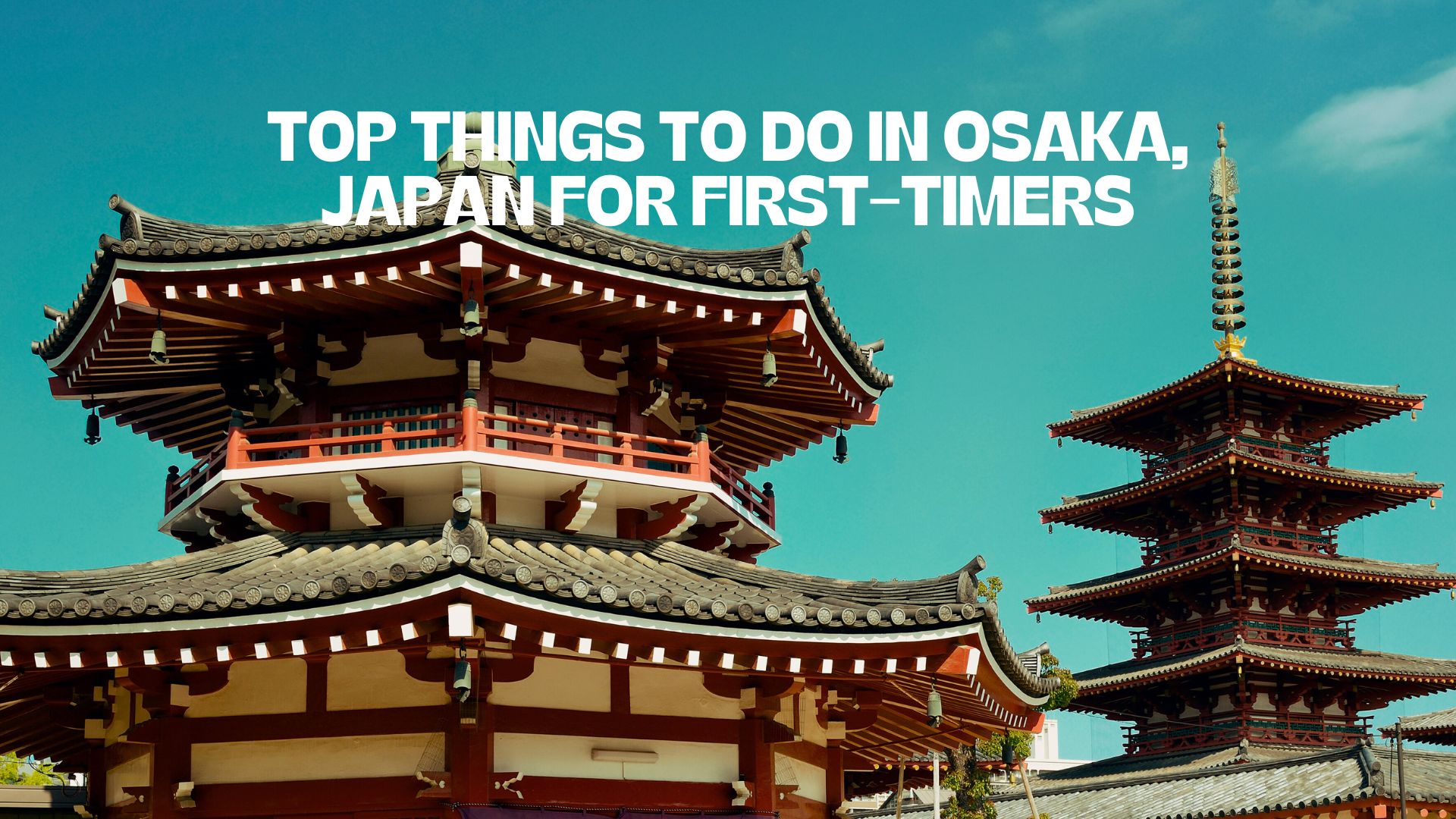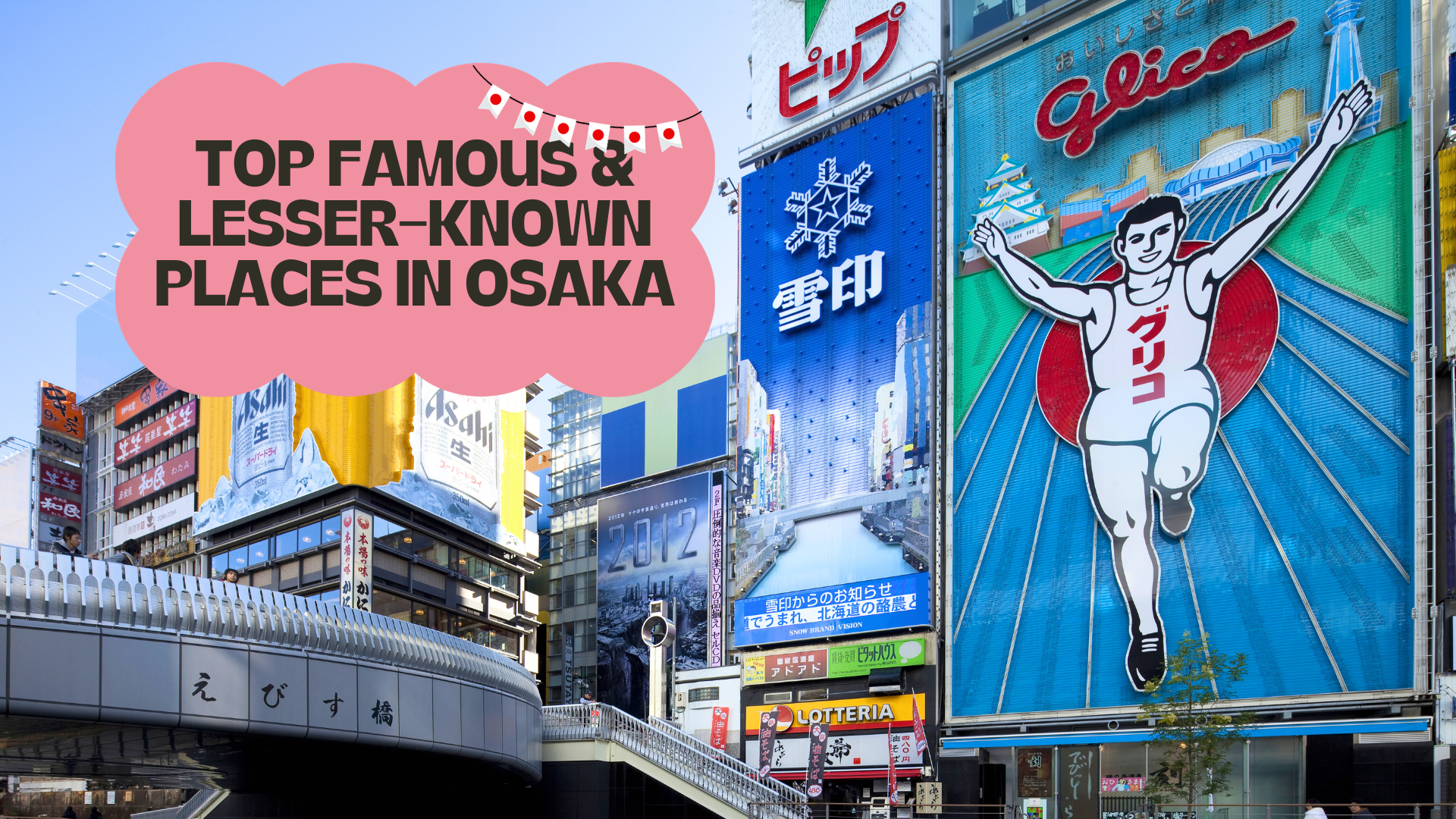
Key Takeaways
- Subways and trains are the BEST way to get around Osaka.
- Getting a prepaid ICOCA card is the BEST way to pay for transport (but a Suica or Pasmo card from Tokyo will also work just fine)
- Most famous places can be easily accessed by public transport — trains and subways
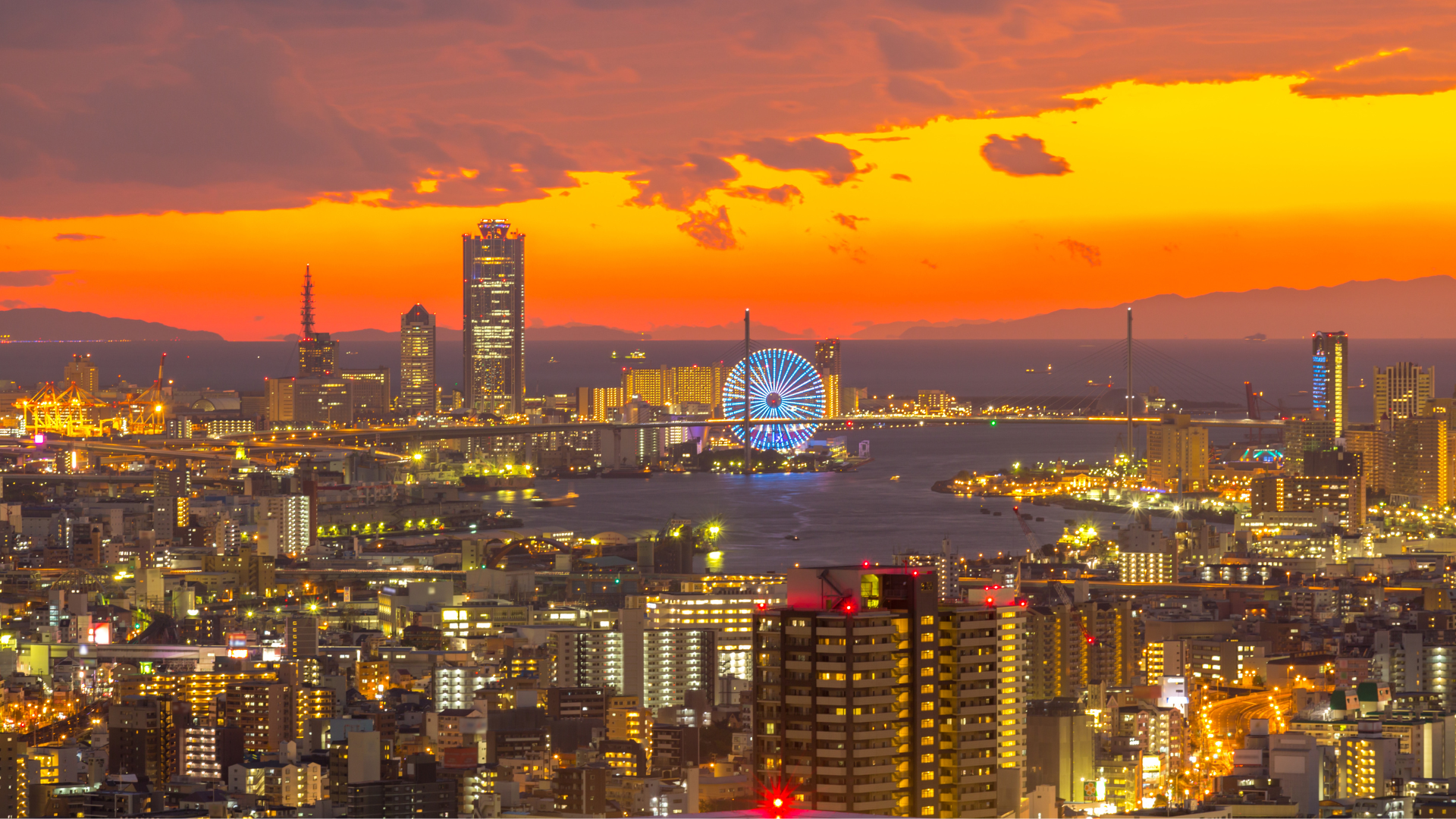
Getting Around Osaka
Osaka, the second-largest city in Japan, is a captivating metropolitan that never fails to mesmerize its visitors. Being reputable for “The Kitchen of Japan,” the culinary scene here is super exciting with a big-deal street food culture — you will surely find amazing authentic Japanese foods for a very affordable price.
Indeed, there is so much to do and see in Osaka that you will never run out of things to do. And the best part? Getting around Osaka is a breeze! As you step foot in this city, you’ll quickly realize how accessible and well-connected it is.
Want to explore Osaka but don’t know where to start? Check out: Discover The Unbeatable Charm of Osaka: A Comprehensive Beginner’s Travel Guide
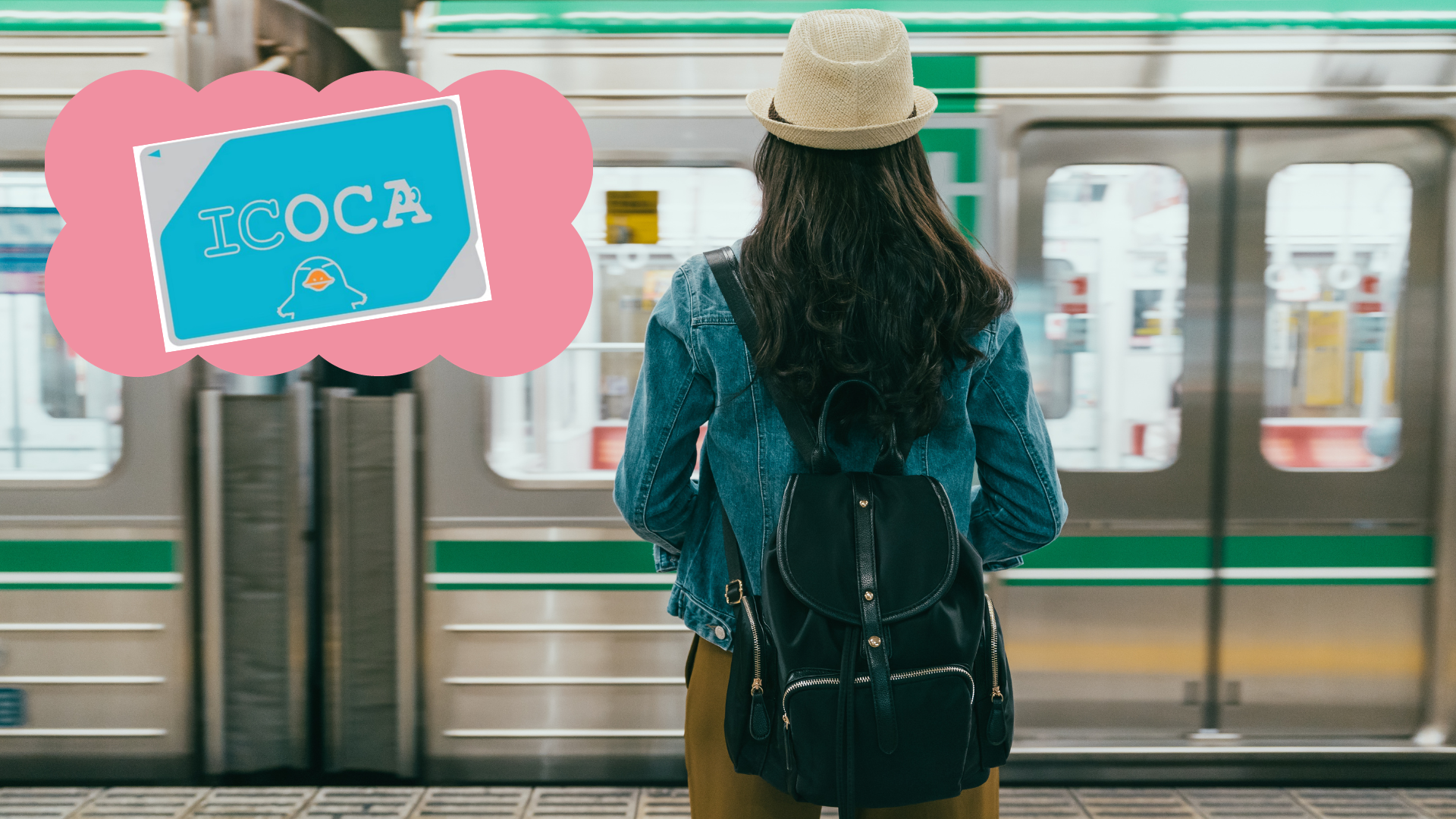
Using IC Card
In Kansai (Osaka), the main card used in the region is called ICOCA – which comes from the Japanese word “ikouka”, which means – “Let’s go”.
The local train system, running on IC (Integrated Circuit) Cards, is your lifeline during your stay. Say goodbye to the hassle of buying tickets every time you hop on a train. With an IC card, you can simply tap in and out of each station, effortlessly navigating through the city.
You can even use your IC card balance to make purchases at convenience stores and vending machines. It’s convenience at its finest! In the Kansai region, the IC card of choice is ICOCA. So, even if you happen to have a Suica or Pasmo card, you can still use it in Osaka. It’s all about seamless travel!
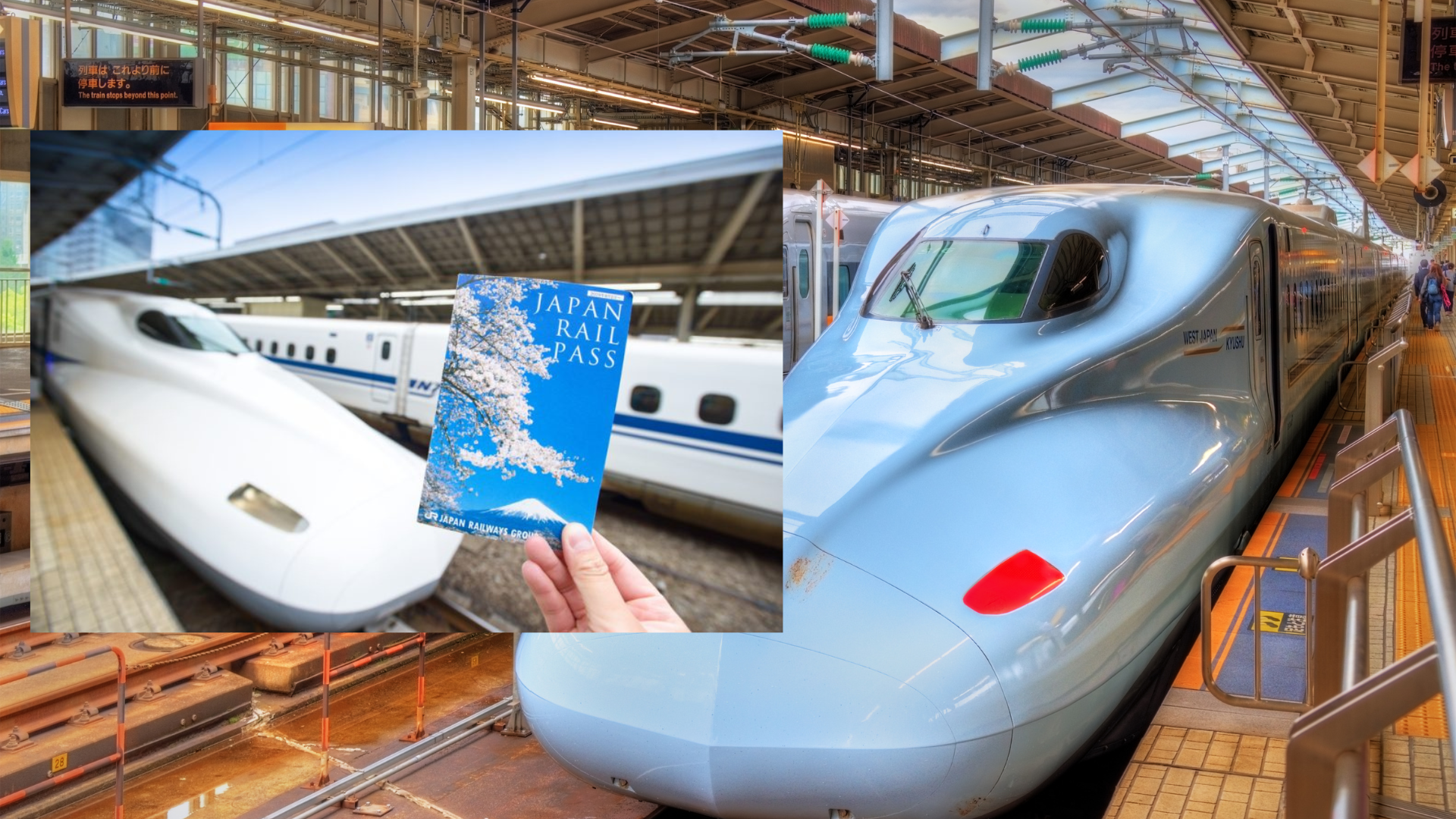
JR Pass
So, if you’re eyeing those scenic train rides between cities, the JR Pass will save you a ton of money. Here’s a little heads-up: make sure to purchase your JR Pass before your trip. You cannot buy it once you’re already in Japan.
You can conveniently order the Unlimited JR Pass online and have it shipped to your home. Planning ahead is key! Now, if your focus is primarily on the Kansai area, you might not need the unlimited JR Pass. The JR Kansai Pass covers Osaka, Kyoto, Nara, and Kobe, making it a great option for exploring these neighboring cities. You can pick up the pass at Kansai Airport and select the duration that suits your travel plans.
Do I Need a JR Pass?
If your visit to Osaka is primarily focused on exploring the Kansai area, you may not require the unlimited JR Pass. Instead, you can opt for the JR Kansai pass, which encompasses Osaka, Kyoto, Nara, and Kobe. This pass can be obtained at Kansai Airport (KIX). You simply need to determine the duration of time you wish to utilize the pass.
If you want to travel to Osaka on a budget? Check out: Budget-Savvy Adventurer’s Guide: How To Travel in Osaka, Japan On A Budget
Top 9 Famous Osaka Attractions That You Have to Visit
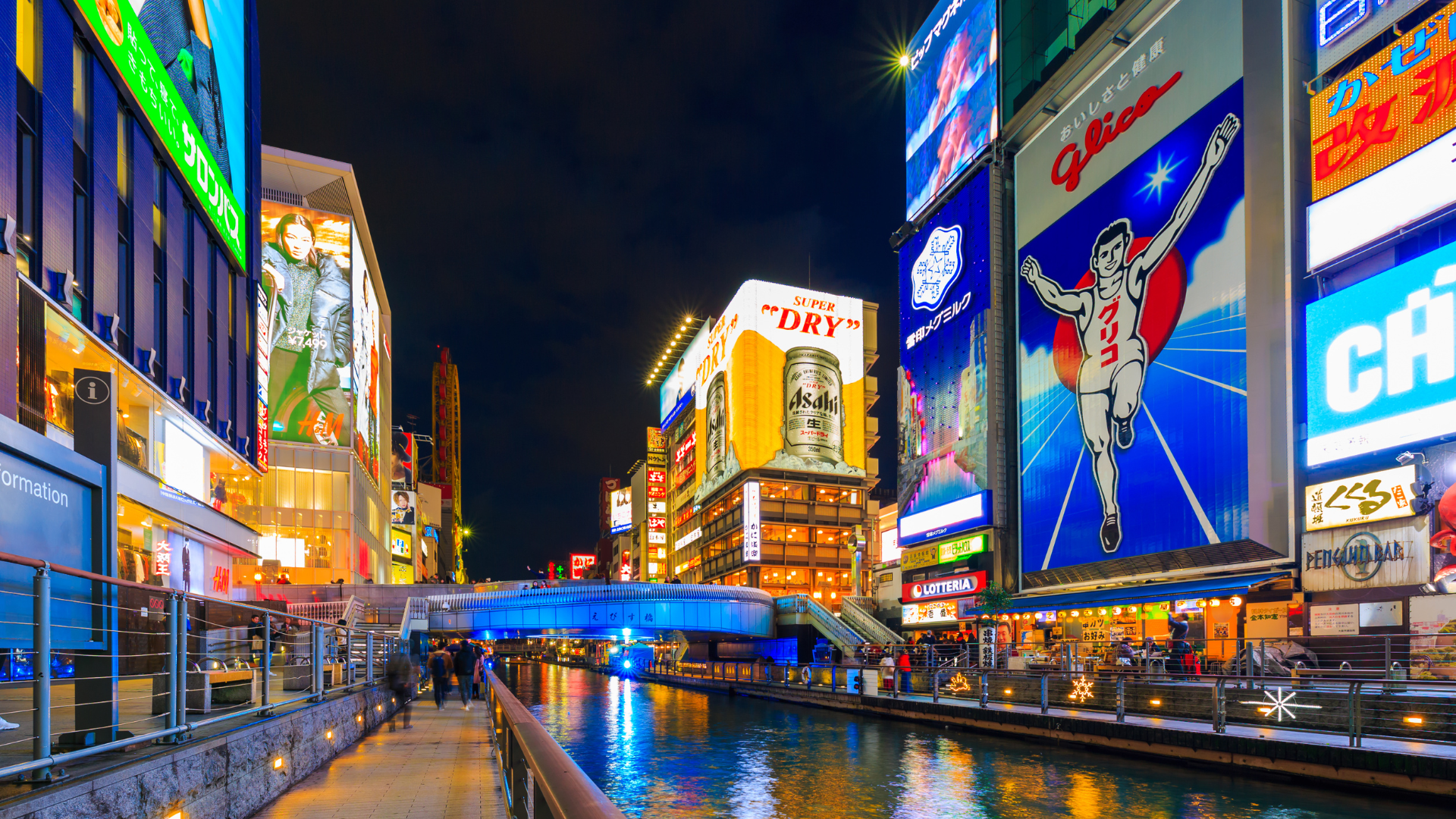
1. Dotonbori: Osaka’s Signature Landmark
Dotonbori is a renowned destination in Osaka, widely recognized for its vibrant and captivating array of billboards that adorn the streets. From the iconic Glico signboard, featuring a raised-arm runner, to captivating animated displays like the giant crab. If you’re wondering where to go in Osaka on the first day, you can make a stop and take pictures with the Gloco signboard.
Spanning approximately 580 meters, the bustling shopping street that connects Shinsaibashi to Dotonbori is lined with an abundance of restaurants and fashion boutiques. This vibrant street attracts a constant flow of visitors, encapsulating the essence of Osaka’s allure in a single location. Within this street, one can indulge in a variety of local Osaka cuisine offered by numerous restaurants.
How to Get to Dotonbori
Both Shinsaibashi and Dotonbori can be conveniently reached from any part of Osaka by train. To get to Shinsaibashi from Osaka/Umeda Station, simply take the Midosuji Line and alight at Shinsaibashi Station. Once there, locate the exit leading to the Shinsaibashi-suji Shopping Street shopping arcade.
By traversing the entire length of the arcade, you will arrive at Ebisubashi Bridge in Dotonbori. Alternatively, if you prefer to directly reach Dotonbori, you can continue your journey on the Midosuji Line until you reach Namba Station.
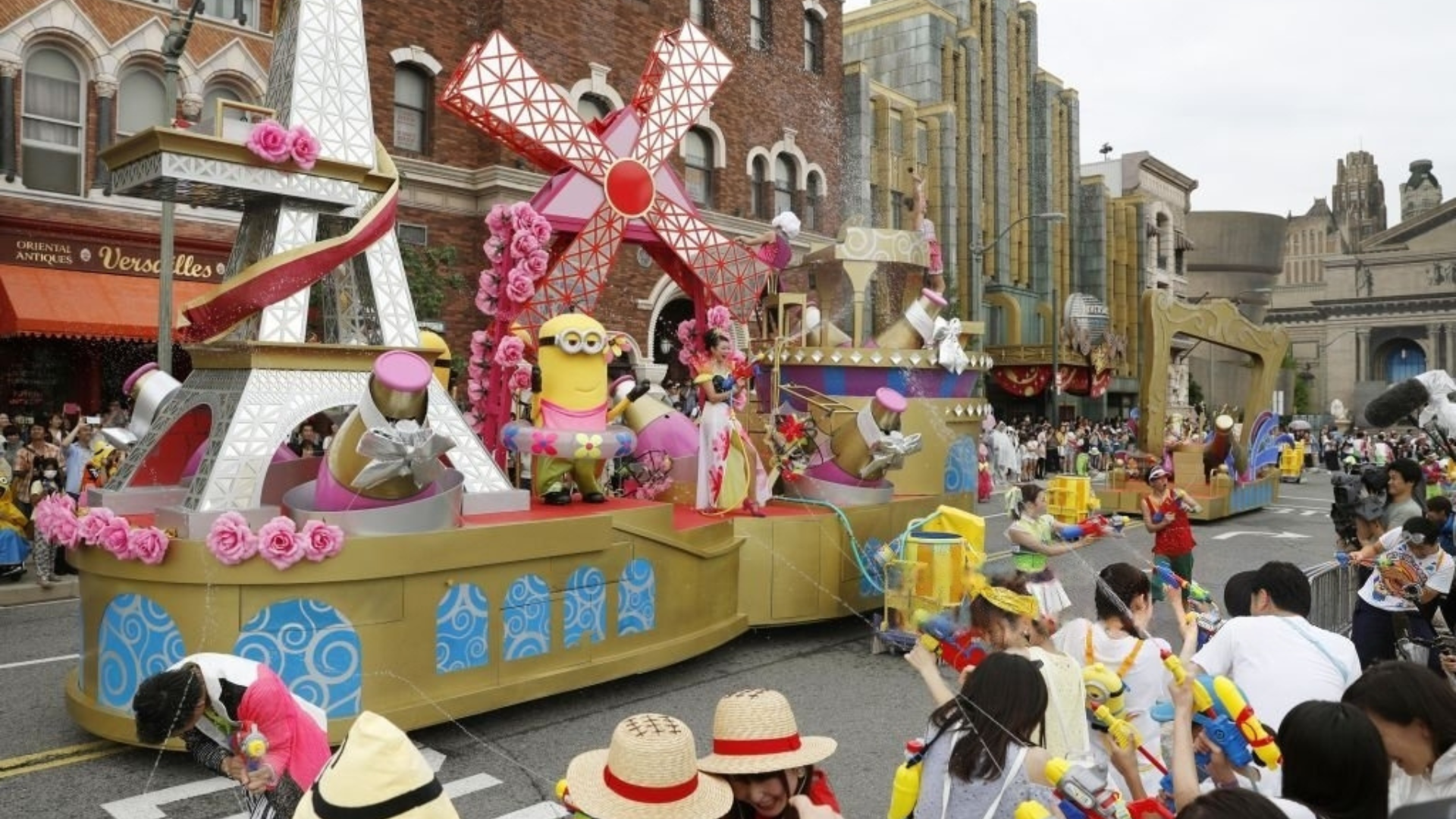
2. Spend A Whole Day At Universal Studios Japan
Universal Studios Japan is claimed to be among the top Universal Studios in the world and will surely wake your inner child up! The highlight of this attraction is the Wizarding World of Harry Potter for all Harry Potter fans, providing an opportunity to immerse oneself in the enchanting realm of Hogwart’s Castle, an exact replica of its cinematic counterpart.
Additionally, visitors can embark on an exhilarating adventure through Jurassic Park or witness the captivating Water World Show. USJ, is surely a must of where to go in Osaka and serves as a theme park that caters to the entertainment needs of the entire family.
It’s important to note that wait times for each ride or show can be around 30 minutes, with potentially longer queues for the more popular rides.
How to Get to Universal Studios Japan
USJ can be easily accessed by train which is both convenient and affordable. If departing from Osaka Station, a direct train ride to Universal City Station takes approximately 12 minutes and costs only 180 yen. Alternatively, a quick transfer at Nishikujo Station extends the travel time to 15 minutes.
For those starting their journey from Osaka Namba Station, taking the Hanshin Namba Line to Nishikujo Station, followed by transferring to the JR Sakurajima Line, will result in a 20-minute trip with a fare of 360 yen.
Another option is to depart from JR Namba Station. Board the JR Yamatoji Line to Imamiya Station and transfer to the Osaka Loop Line. From there, continue to Nishikujo Station and switch to the JR Sakurajima Line. This route takes approximately 25 minutes and incurs a fare of 180 yen.
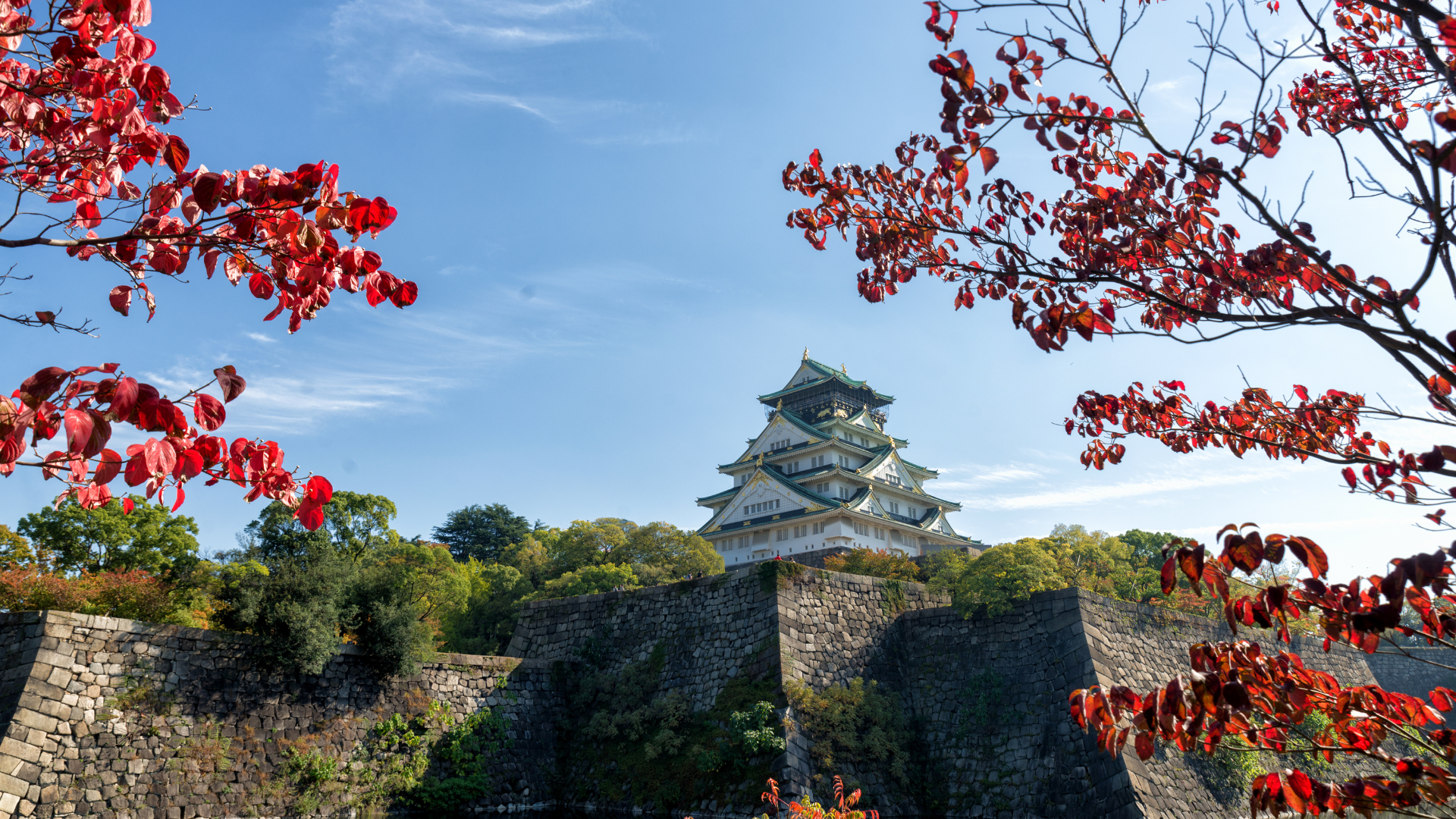
3. Osaka Castle: The Symbol of Osaka
Osaka Castle stands as the most iconic symbol of the city. Its construction dates back to 1583 during the unification of Japan under the reign of Toyotomi Hideyoshi.
Within the expansive premises, covering an area of 1.056 square kilometers, numerous architectural remnants hold the designation of Nationally Important Cultural Properties.
The current castle tower is the third reconstruction, as the original structure was tragically destroyed during the Siege of Osaka.
Following its reconstruction, the tower faced further misfortune when it was struck by lightning and consumed by fire during the Tokugawa period.
Within the area of traditional Japanese architecture of Osaka Castle, visitors can explore a museum that showcases artifacts and information pertaining to the era of provincial wars and the castle’s historical significance.
Additionally, the observatory located on the eighth floor provides breathtaking panoramic vistas of the Osaka streetscape.
Osaka Castle is also renowned for its cherry blossom viewing opportunities, featuring approximately 3,000 cherry trees.
During the cherry blossom season, plum blossoms can also be witnessed which bloom from late January through late March.
How to Get to Osaka Castle
Osaka Castle is situated amidst expansive parkland and can be accessed by four nearby stations.
For those departing from Osaka Station, the simplest route to Osaka Castle is to take the Osaka Loop Line and alight at Osakajokoen Station, located on the northeast side of the park. From there, a pleasant 18-minute walk through the park grounds leads directly to the castle.
Morinomiya Station, situated on the southeast side of the park, provides convenient access to the Osaka Loop Line, Chuo Subway Line, and Nagahori Tsurumi-ryokuchi Subway Line.
On the southwest side of the park, Tanimachi 4-chome Station serves as a convenient stop for the Chuo Subway Line and Tanimachi Subway Line.
Lastly, Temmabashi Station on the northwest side of the park grants access to the Keihan Main Line and Tanimachi Subway Line
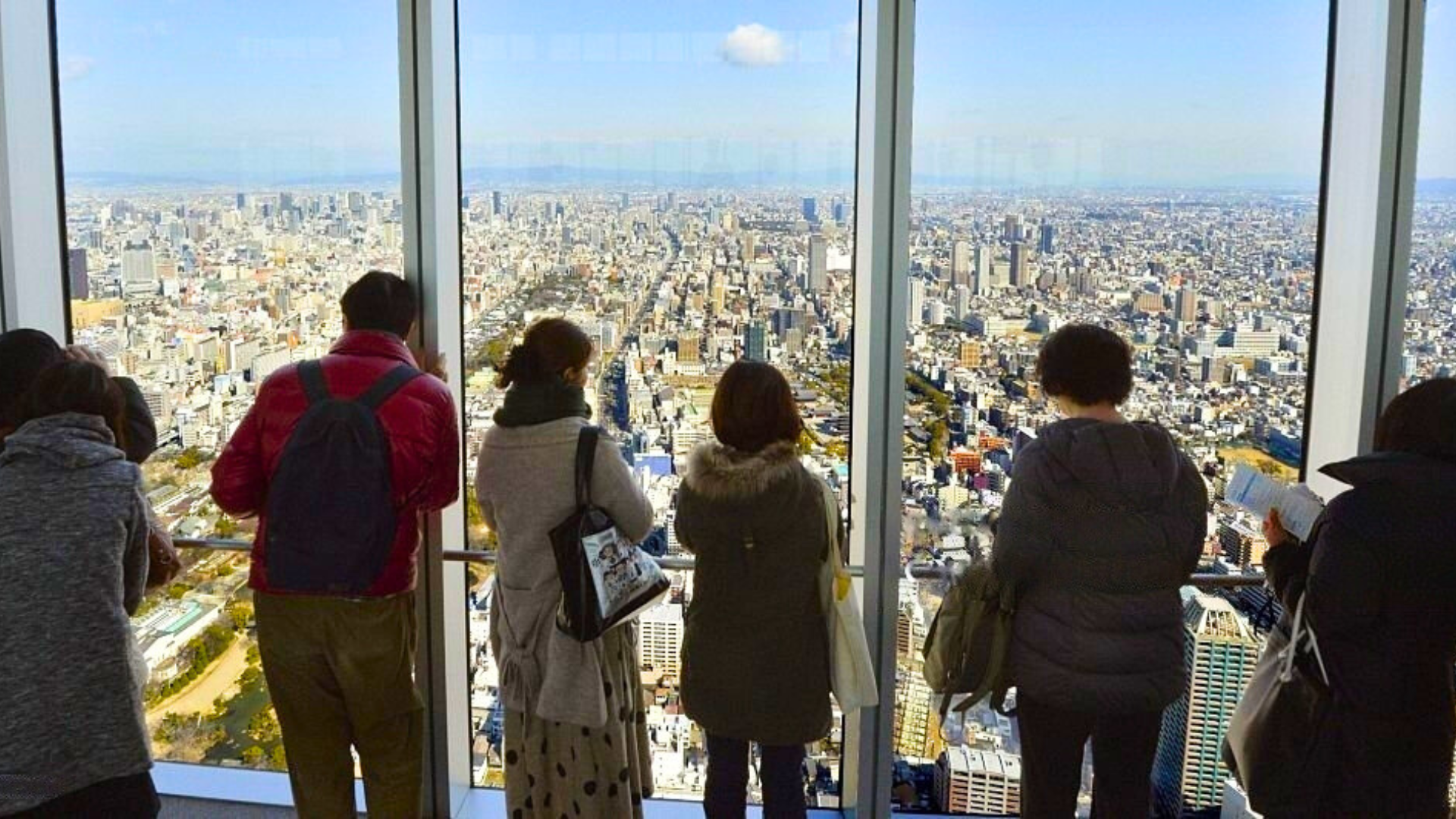
4. Harukas 300: Soak Up The View of Osaka
Harukas 300 is an observatory deck located in Abeno Harukas, a contemporary skyscraper towering at a height of 300 meters.
This place should definitely be in your Osaka travel itinerary as it serves as a spot where you can see the whole city.
Similar to the observatory deck in Umeda Sky Building, visitors can explore a range of facilities, including the Kintetsu Department Store, a museum, a hotel, offices, and cafes with a city view.
To access the ceiling corridor located on the 60th floor, a ticket purchase is required. However, the 16th-floor garden offers free entry, allowing visitors to relish the panoramic vistas of Osaka.
For those seeking a memorable experience, the 58th-floor café restaurant called SKY GARDEN 300 proves to be a popular choice, providing a picturesque setting to enjoy the stunning night views.
How to Get to Harukas 300
You can take the subway and walk there. The nearest station to Abeno Harukas is Osaka Abenobashi Station, conveniently connected to the Kintetsu Minami Osaka Line.
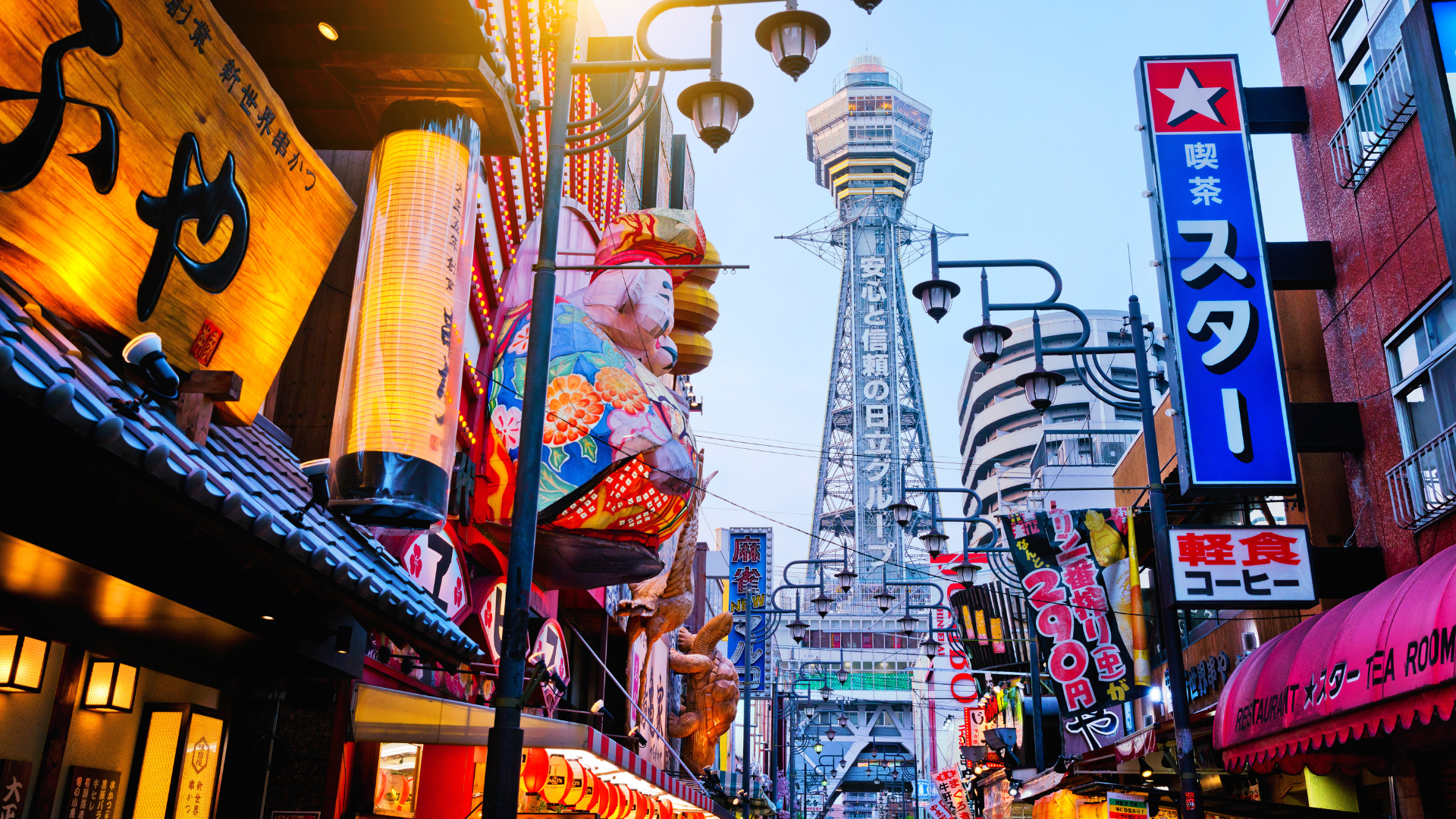
5. Tsutenkaku and Shinsekai: Ecletic Japanese Food Heaven
Tsutenkaku, widely regarded as the emblematic symbol of Osaka, stands tall at a height of 103 meters and serves as an observation tower that provides an encompassing panoramic view of the cityscape.
Positioned on the fifth-floor observation deck, the Billiken statue holds significance as it is believed that rubbing the soles of its feet brings forth happiness. As a result, a continuous stream of people can be witnessed lining up to partake in this ritual.
Surrounding Tsutenkaku is an area known as Shinsekai, adorned with souvenir shops and restaurants. Here, visitors can immerse themselves in a vibrant ambiance characterized by flashy signboards.
It offers an opportunity to indulge in shopping and savor a variety of delectable cuisine, showcasing the finest culinary delights Osaka has to offer. This popular destination showcases a nostalgic landscape, capturing the essence of the city’s unique charm and culinary heritage.
How to get to Shinsekai
Shinsekai is conveniently located within a brief walking distance of multiple stations. You can easily reach it by taking the JR Osaka Loop Line to Shin-Imamiya Station, or by using the Midosuji and Sakaisuji subway lines to reach Dobutsuen-mae Station.
Another option is to take the Sakaisuji Subway Line and alight at Ebisucho Station. Whichever station you choose, a pleasant stroll will lead you to the vibrant streets of Shinsekai.
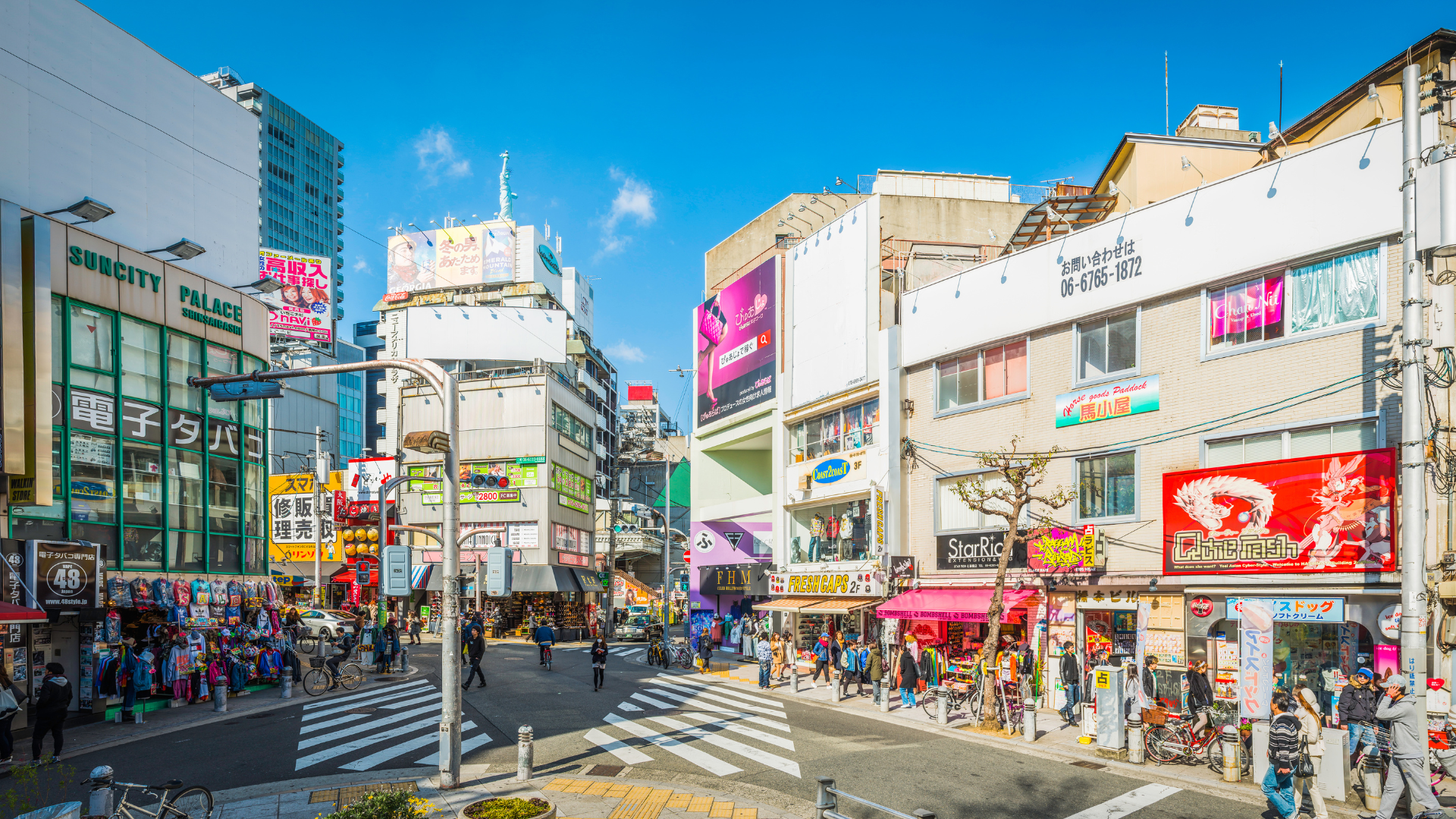
6. Experience Vintage Vibe at Amerikamura
Amerikamura, alternatively referred to as the America Mura American Village, has gained substantial popularity as a vibrant subculture hub in Osaka.
If you’re a big fan of thrifting, this spot is where to go in Osaka for the abundance of import shops, second-hand brand names, and other American merchandise.
The range of second-hand stores in the vicinity varies from highly affordable options to upscale vintage boutiques featuring renowned brands.
While the concept of second-hand stores is gradually gaining traction in Japan, they remain relatively scarce. Thus, the concentration of such establishments within Amerikamura renders it a true treasure trove for enthusiasts and seekers of unique finds.
How to get to Amerikamura
Amerikamura can be easily accessed by both train and walking. If you prefer to travel by train, you can reach Amerikamura within a short five-minute walk from Shinsaibashi Station. Alternatively, if you’re coming from Namba Station, a leisurely fifteen-minute stroll will lead you to the vibrant district of Amerikamura.
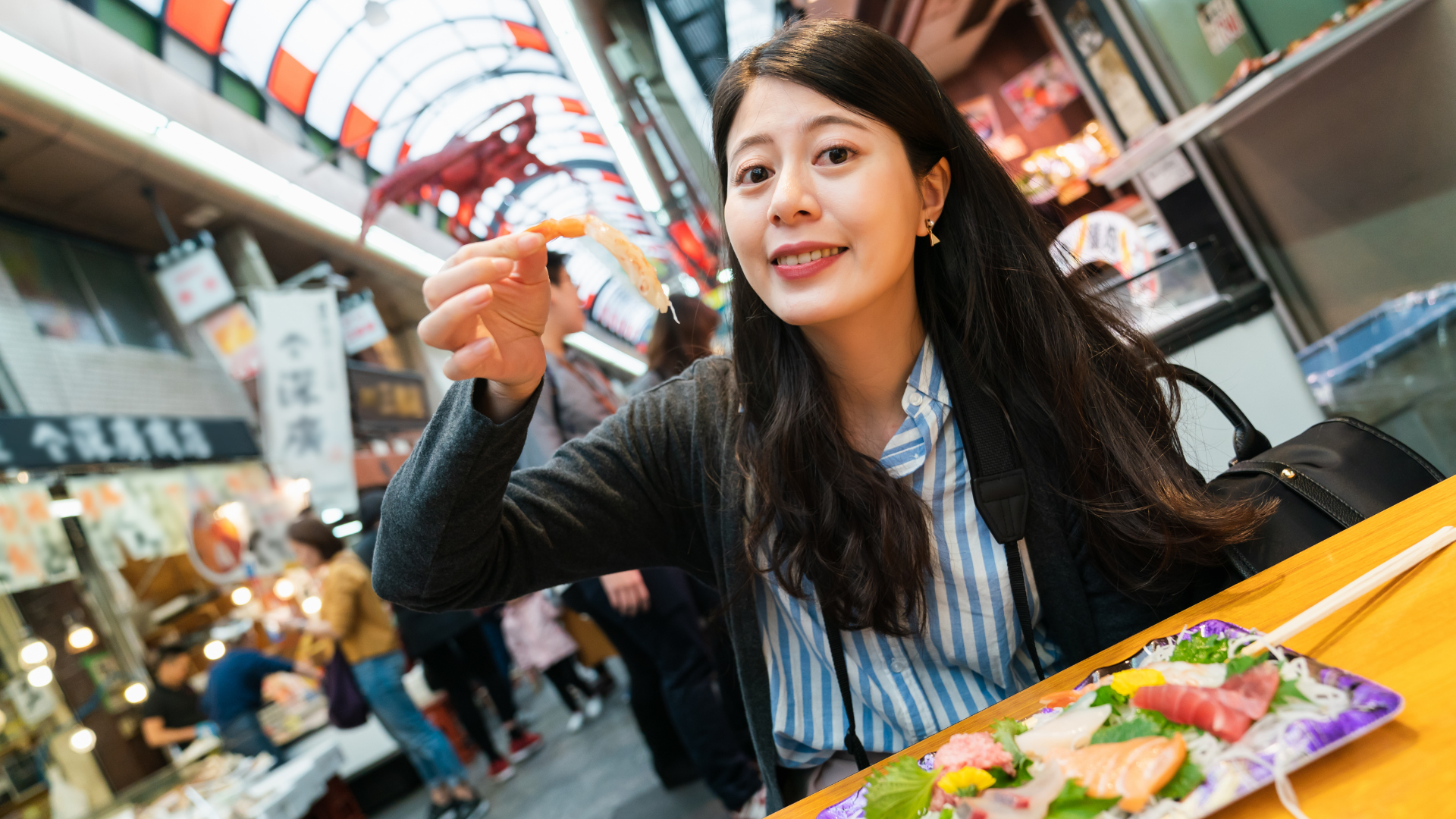
7. Get Fresh Seafood and Local Food at Kuromon Market
Similar to Dotonbori, Kuromon market presents an enticing haven for culinary exploration, which is definitely where to go in Osaka for fresh seafood and local food from diverse vendors.
Occupying a significant space in Osaka, this bustling market offers ample opportunities to indulge in a variety of delectable dishes from its vendors. One of the highlights of visiting Kuromon Ichiba is the pleasure of savoring freshly prepared food, as numerous vendors showcase their culinary skills right before your eyes.
Seafood enthusiasts are in for a delightful treat, as Kuromon Ichiba is renowned for its exquisite fish-based offerings. For first-time visitors, it is highly recommended to embark on a gastronomic adventure and sample the diverse range of fresh street foods available, as it promises a truly unique and memorable experience.
How to Get to Kuromon Ichiba
Kuromon Market is a few steps from Nipponbashi Station on the Sennichimae and Sakaisuji subway lines. Alternatively, it is a ten-minute walk from Namba Station.
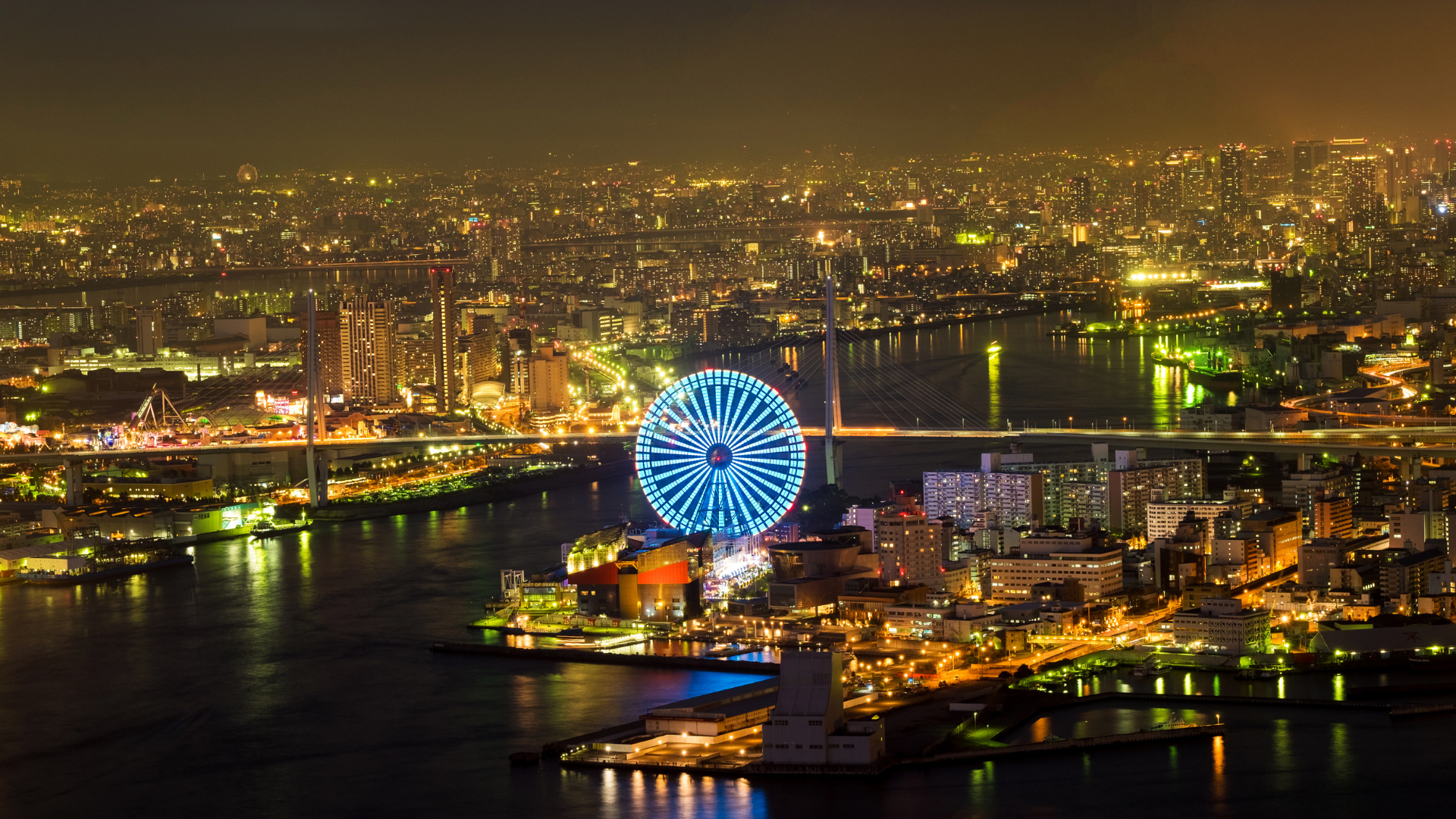
8. Tempozan Ferris Wheel
Situated within the renowned Tempozan Harbor Village, a popular recreational destination in Osaka, the Tempozan Ferris Wheel stands as a prominent attraction adjacent to Kaiyukan. Boasting impressive dimensions of 112.5 meters in height and 100 meters in diameter, it holds the distinction of being Japan’s largest Ferris wheel. A leisurely fifteen-minute ride allows you to ascend into the sky and relish panoramic vistas.
One of the captivating aspects of the Ferris wheel is the opportunity to not only behold a complete view of Osaka but also marvel at the expansive ocean below. This dual perspective adds to its charm, creating a captivating experience. Additionally, the nighttime scenery is renowned for its romantic ambiance, providing an enchanting backdrop for visitors.
How to Get to Tempozan Ferris Wheel
You can easily get there by taking the subway. Only a 5-minute walk from the Osakako Station when taking the subway Chuo line.
Lesser-known Places
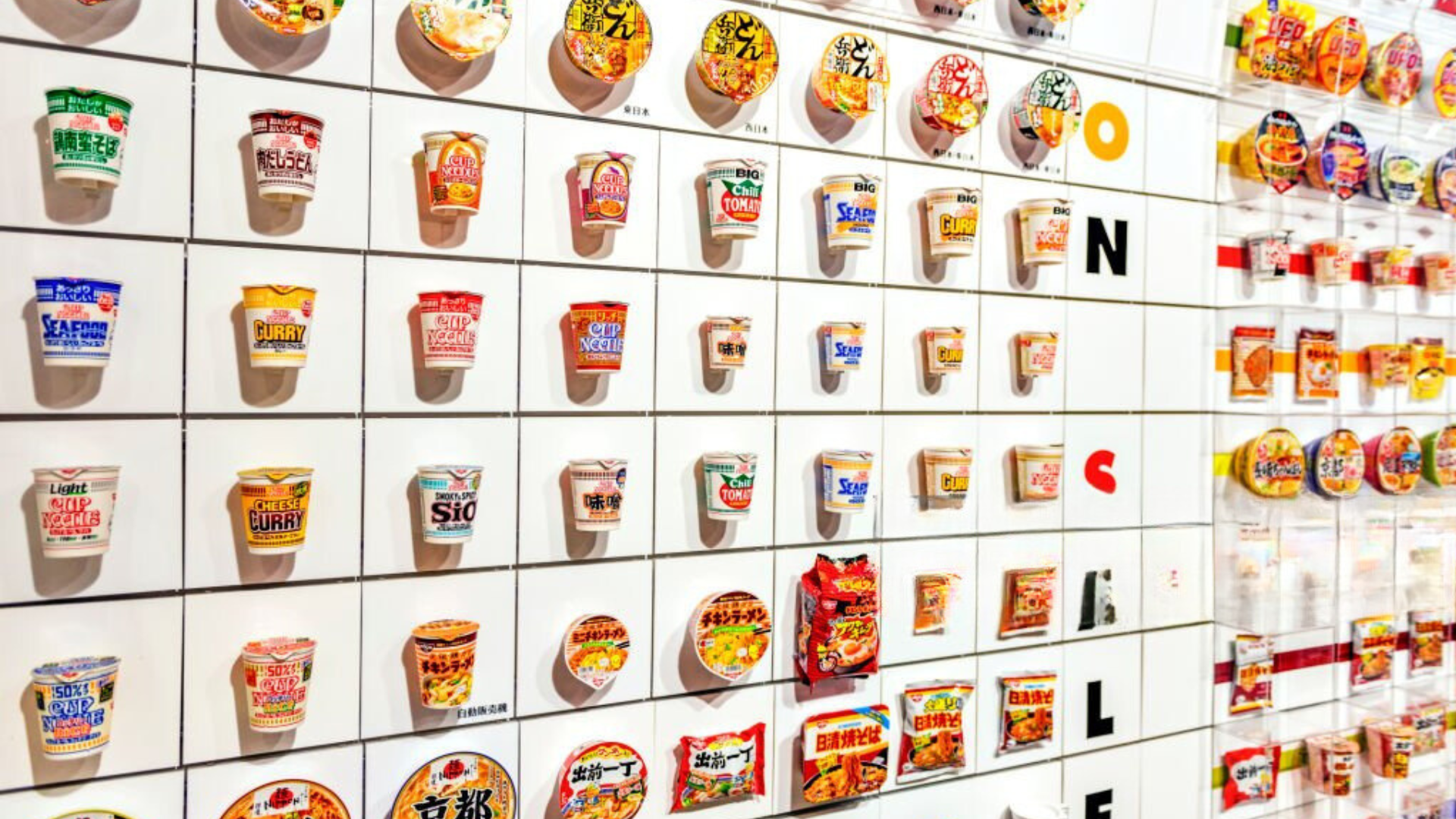
1. CUPNOODLES Museum Osaka Ikeda: Create Your Own Signature Instant Ramen
Ikeda City holds special significance as the birthplace of instant noodles. Back in 1958, the world’s very first instant noodle product, “Chicken Ramen,” originated in a humble yard of Momofuku Ando’s house.
Mr. Ando, the inventor of instant noodles and the founder of Nissin Food Products Co., Ltd., gained fame for this creation.
Inside the museum, you’ll have the chance to not only learn about the instant ramen, development, and manufacturing of instant noodles but also to unleash your creativity.
You can design your own cup noodle, choosing your preferred soup and ingredients. Additionally, you can participate in the “Handmade Chicken Ramen Hands-On Workshop” by making Chicken Ramen from scratch.
How to Get to CUPNOODLES MUSEUM OSAKA IKEDA
The museum is a five-minute walk south from Ikeda Station of Hankyu Railway, Takarazuka Line.
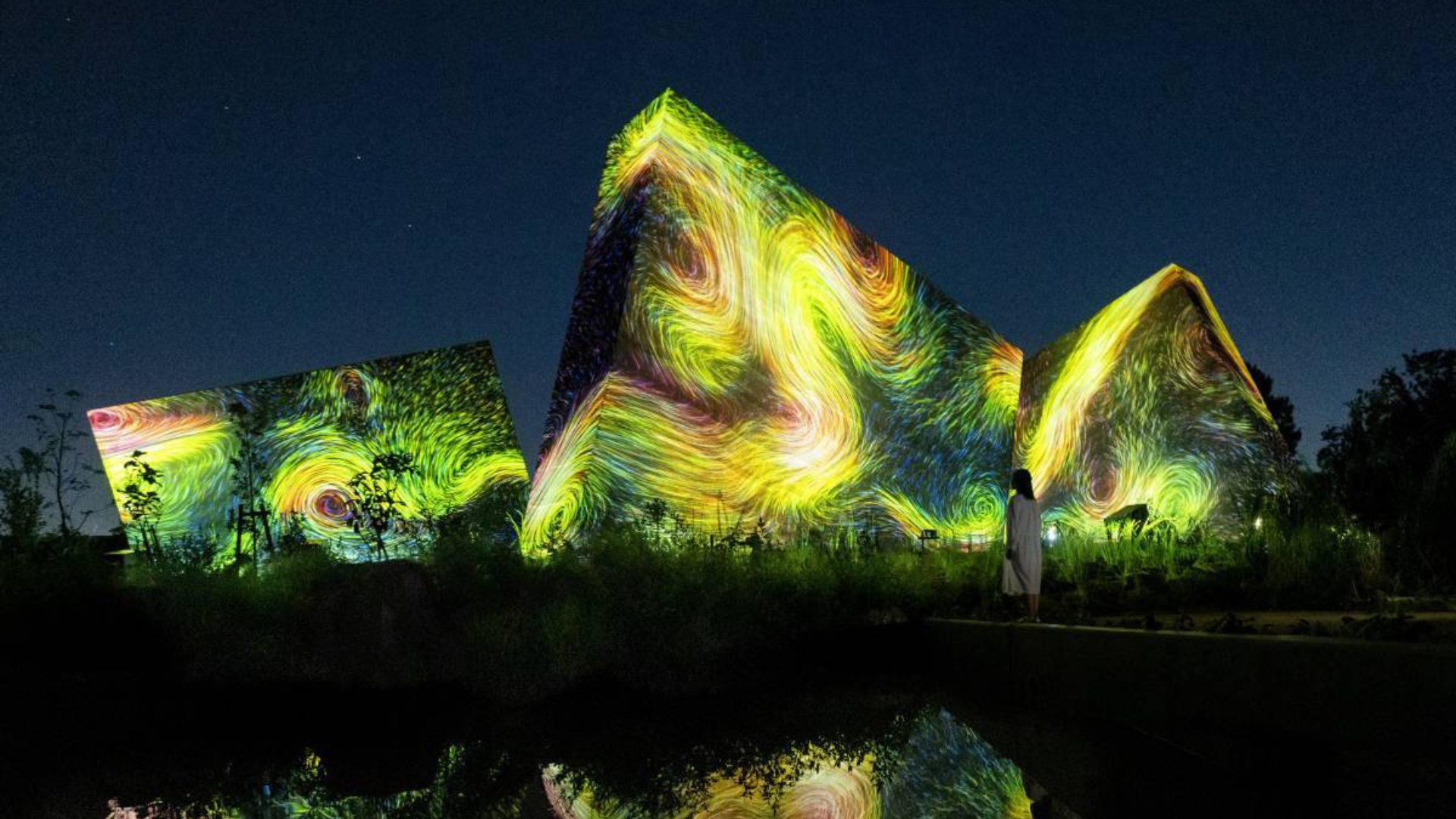
Credit: teamLab Botanical Garden
2. teamLab Botanical Garden
Nagai Botanical Garden is a beautiful outdoor botanical garden that spans 240,000 square meters of lush greenery and a picturesque central lake.
The garden showcases a diverse array of flowers and plants, each transforming with the changing seasons. As night falls, the garden undergoes a mesmerizing transformation through teamLab’s permanent exhibition.
teamLab is an international creative company that brings together technology and art to nature. Digitized Nature at Nagai Botanical Garden, is a testament to their vision. They transformed to the garden into art without causing any harm and you will get to truly experience the surreal atmosphere of light and art installation.
How to get to teamLab Botanical Nagai Garden
The garden can be easily accessed via Osaka Metro Midosuji Line to Nagai Station then walk 10 minutes.
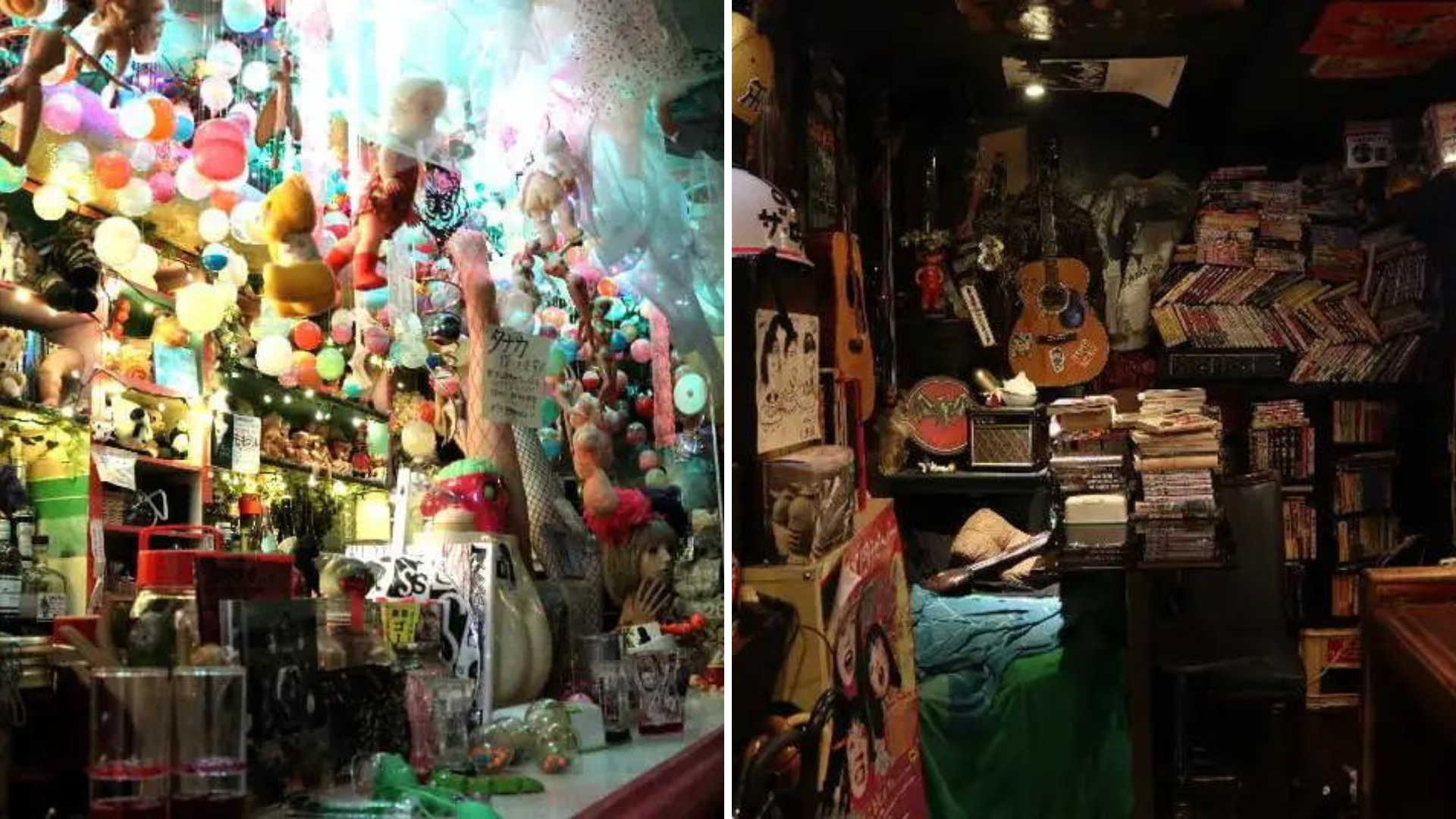
Credit: Live Japan Perfect Guide
3. Mitera Kaikan
Discover the deep underground culture in the midst of Osaka’s trendy Shinsaibashi area. Mittera Kaikan is a multi-tenant building renowned for Osaka’s premier underground hubs for alternative culture where you’ll find a plethora of intriguing bars, each with its own unique style and ambiance.
While the shops on the first floor facing the main road offer a warm welcome, venturing into the dimly lit basement or second floor may require a touch more courage.
But can you resist the allure of adventure? Walking down to the basement might feel a little strange at first but once you get there, you will find rooms with a small window in which you can peek and see what’s happening inside. Inside those rooms are cool bars and even restaurants with different themes. One of them is called Bar Puka Puka which is packed with manga, 90s rock band posters, and many more.
How to Get to Mitera Kaikan
The building is only a 10-minute walk from the Namba subway station or you can walk from Shinsaibashi-suji station as well.
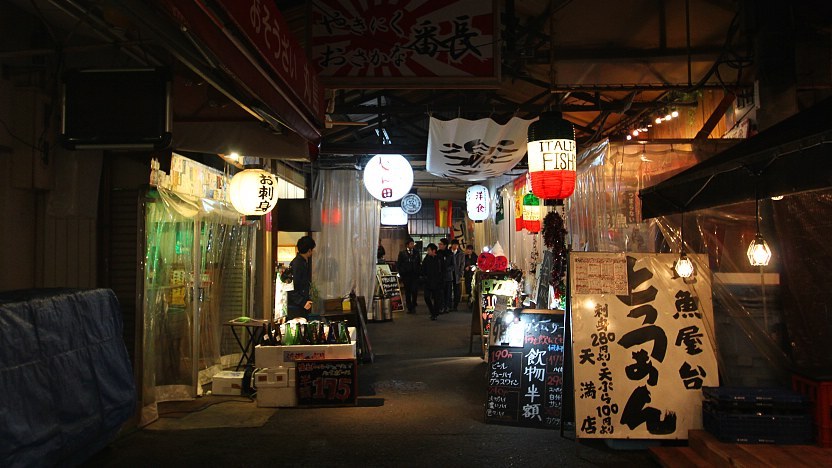
Credit: Japan Guide
4. Tenma In The Evening
During the day, Tenma is a bustling shopping district, but as night falls, it transforms into a maze of unique bars, giving this Osaka neighborhood a vibrant and historic charm. Dive into the authentic side of the city by exploring Tenma, renowned for its historical shrine, a lively annual festival, and unparalleled nightlife.
After sundown, the unassuming back alleys near Tenma station come alive, forming a thrilling labyrinth of bars known as Ura-Tenma.
Just outside the station’s north exit, you’ll find a myriad of small, character-filled eateries. From cozy yakiniku and sushi joints to delightful tempura spots and lively dive bars, there’s something for every taste.
It’s a favorite spot for Osaka’s salarymen and women, making it a perfect place to experience local cuisine. Take a leisurely stroll along the lantern-lit streets, and feel free to wander into any establishment that catches your eye.
How to Get to Tenma
Getting to Tenma is a breeze with multiple convenient stations nearby.
If you’re taking the Osaka Loop Line, simply hop off at JR Tenma Station, which conveniently connects to Tenjinbashi-suji. Another option is Tenjimbashi-suji Rokuchome Station, where you can access the neighborhood via the Tanimachi, Sakisuji, and Hankyu-senri Lines.
For those planning to visit Osaka Tenmangu Shrine, the closest stations are Minami-morimachi Station on the Tanimachi and Sakaisuji Lines, as well as Osaka Temmangu Station on the JR Tozai Line.
Top 5 Temples and Shrines for Good Luck
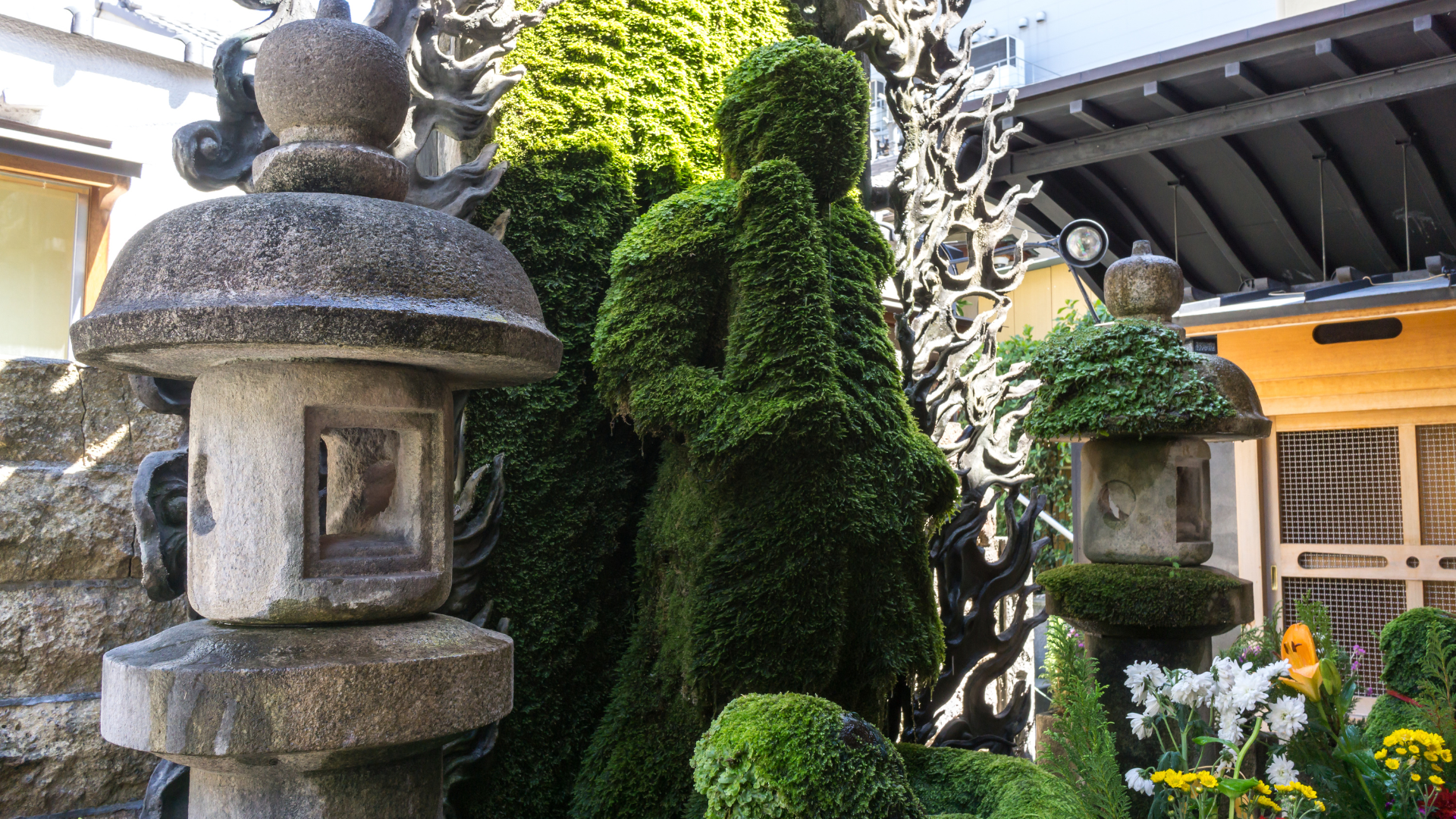
1. Hozenji Temple
Hozenji Temple is a hidden gem nestled in Osaka’s vibrant Minami district. One of its main attractions is the enchanting Nishimuki Fudo Myo’o statue, adorned with lush green moss. Sprinkling water on the statue is believed to grant wishes, adding to the magical ambiance and historical significance of the temple.
As you explore the temple grounds, you’ll often encounter friendly cat companions, cherished for their calming presence.
On the north side of Hozenji Temple, you’ll find Hozenji Yokocho, a charming lane lined with local restaurants and sushi shops.
How to Get to Hozenji Temple
The temple is only a short walk from Dotonbori Bridge. Only a 4-minute walk from Namba Subway Station and 6 minutes from Nippombashi Subway Station.
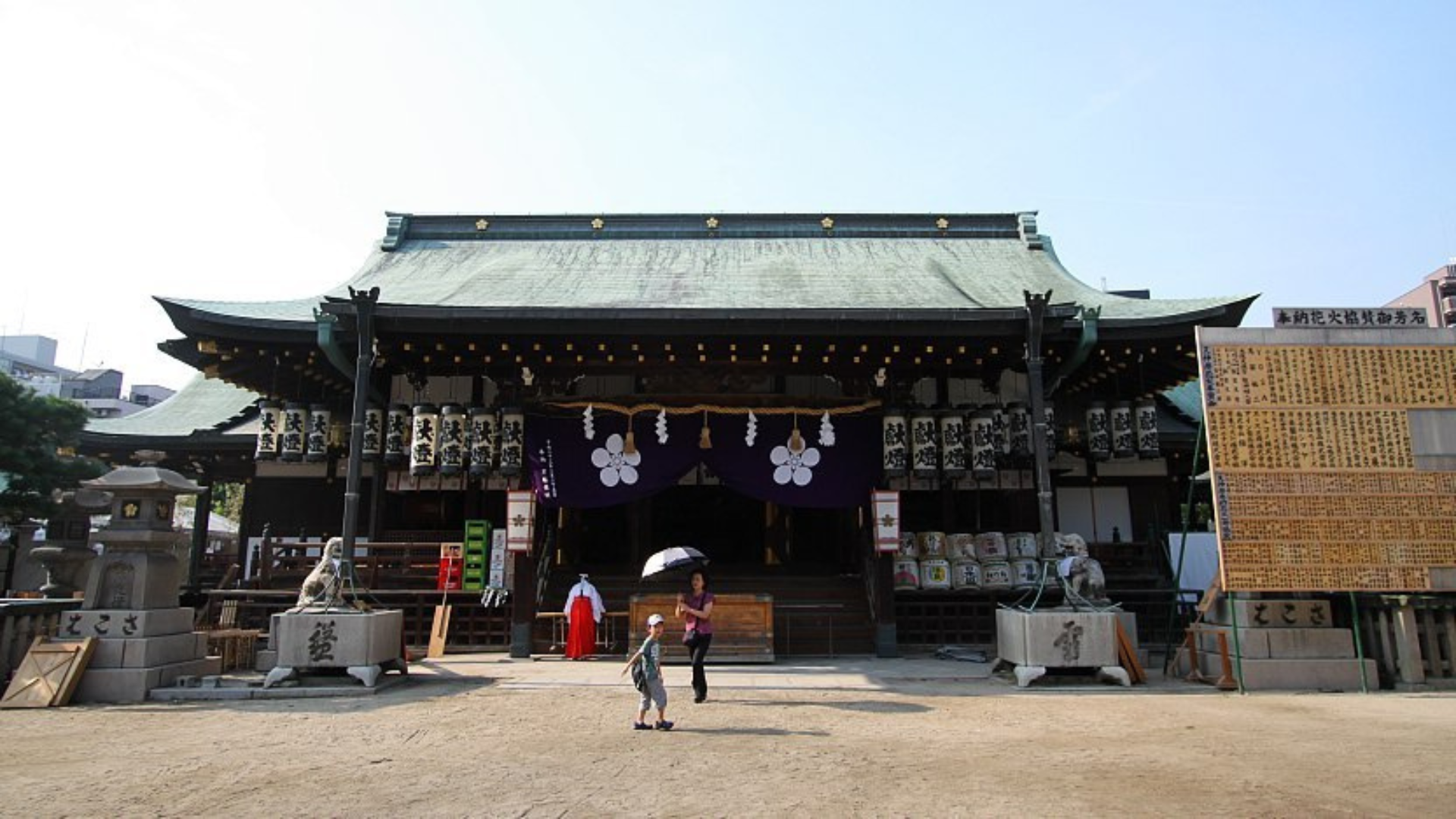
Credit: Japan Guide
2. Osaka Tenmangu Shrine
Tenmangu Shrine is where the deity of learning, Sugawara Michizane, is worshipped. This Shinto shrine holds special significance during exam season in Osaka, as it becomes a gathering place for students praying for success.
One of the main highlights is the Toryuumon gates located to the east and west of the main sanctuary, where visitors partake in the traditional “passing through prayer” called torinuke sanpai.
Please note that the shrine has limited opening days, so it’s advisable to check before planning your visit. For an unforgettable experience, mark your calendar for the Tenjin Matsuri Festival held on July 24th and 25th.
This lively event infuses the Osaka Tenmangu Shrine with a vibrant atmosphere. Don’t miss the exciting fumatory, where 100 ships move in all directions, the magnificent rikutogyo procession featuring around 3,000 men dressed in ancient costumes, as well as the dazzling fireworks and the dal mikoshi, a float carried by women.
How to Get to Osaka Tenmangu Shrine
Located just a 5-minute walk from Minamimorimachi Subway Station, Osaka Tenmangu Shrine is easily accessible. Plan your visit and immerse yourself in the rich traditions and festivities of this cherished shrine.
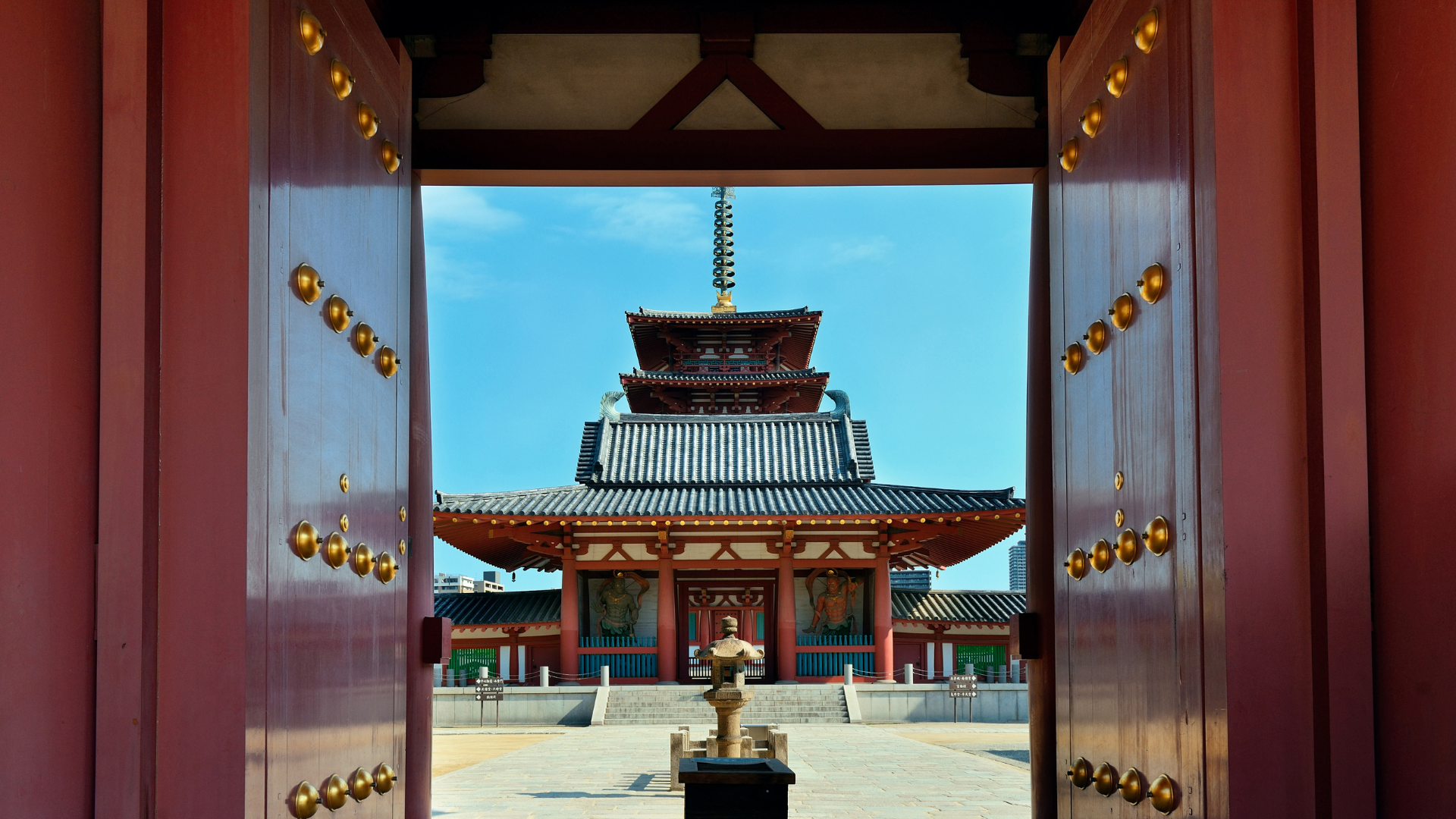
3. Shitennoji Temple
Experience the rich history of Shitennoji Temple, established in 593 during the reign of Emperor Suiko by Shotoku Taishi. It holds the distinction of being Japan’s first state-sponsored Buddhist temple, drawing inspiration from Chinese Buddhist temples of the 6th and 7th centuries.
The temple follows the architectural style known as “shitennoji shiki garan,” featuring a layout where the nakamon (middle gate), gojyunoto (5-storey pagoda), kondo (main hall), and kodo (lecture hall) are aligned in a straight line and surrounded by corridors.
How to Get to Shitennoji Temple
Conveniently located, Shitennoji Temple is a mere 12-minute walk from Shitennoji Station, accessible via the JR and Subway Lines. Embark on a journey through time as you explore this remarkable temple.
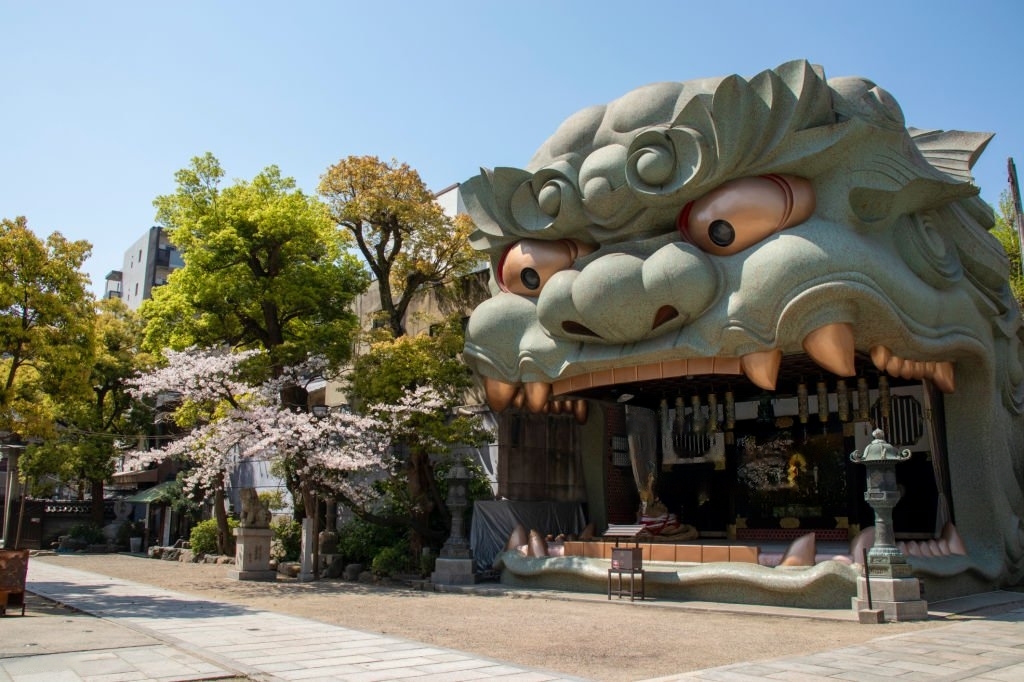
4. Namba Yasaka Shrine
Located in Osaka’s lively Namba area, you’ll find the beloved Namba Yasaka Shrine. Its iconic feature is the grand Shishiden, a pavilion adorned with a lion’s head. Visitors flock from near and far to capture memorable photos in front of the wide-open mouth of this magnificent lion.
The shrine’s history traces back to the reign of Emperor Nintoku (4th to 5th century) when it was known as Namba Shimonomiya, meaning “Lower Namba Shrine.” One of its highlights is the summer festival, featuring a tug-of-war ritual recognized as an Intangible Folk Cultural Asset by Osaka City. The festival also includes a captivating lion dance at the Shishiden and a vibrant Funatogyo boat procession along the Dotonbori moat.
How to Get to Namba Yasaka Shrine
The shrine is conveniently located near Namba station which is only around 10 minutes walk from the station.
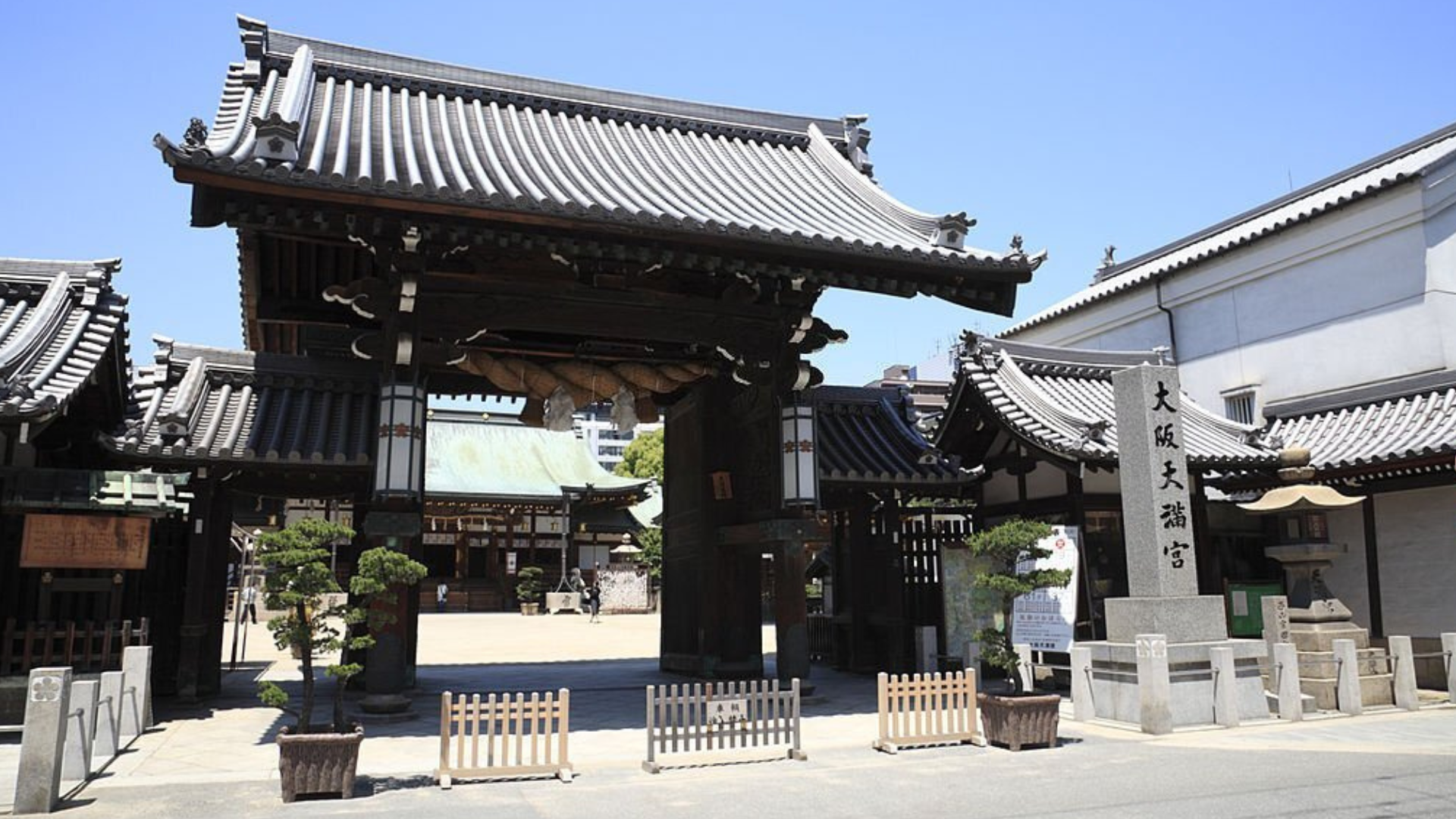
5. Osaka Tenmangu Shrine
Osaka Tenmangu Shrine, established during the late Heian period (794-1185), pays homage to Sugawara no Michizane, affectionately known as “Tenjin-san” by the locals. Renowned as a place of prayer for success in entrance examinations and a picturesque spot for viewing plum blossoms, the shrine attracts countless visitors year-round.
In July, the grand Tenjin Matsuri, one of Japan’s three major festivals, takes place. It features the lively Rikutogyo procession of portable shrines, the spectacular Funatogyo boat procession with around 100 boats, and a dazzling fireworks display, a beloved summer tradition.
The surrounding area, known as Tenma, offers its own allure. Don’t miss the vibrant Tenjinbashisuji Shopping Street, the longest shopping street in Japan, bustling with food stalls and a lively atmosphere. Another popular section is Ura-Tenma, which promises delightful experiences for visitors.
How to Get to Osaka Tenmangu Shrine
To reach Tenmangu Shrine, you can conveniently use Minamimorimachi Station on the Tanimachi and Sakaisuji subway lines, or Osaka Temmangu Station on the JR Tozai Line. If you’re looking for bars and restaurants, head towards the north exit of Tenma Station on the JR Osaka Loop Line. There, you’ll find a vibrant cluster of dining options within walking distance. Enjoy exploring the area with easy access and a variety of culinary delights.
Bonus
Due to the convenience and interconnectedness of the public transport system in Osaka, main attractions or even lesser-known places can be easily accessed. It is most recommended to choose accommodations near major train stations such as Umeda, Shin-Osaka, Namba, Tennoji, or Umeda/Osaka Station. These locations offer excellent accessibility and serve as ideal bases for exploring the city.
The newly-launched Lub d Osaka Honmachi is conveniently located near Hommachi subway station, one station away from Namba and the next station to Shinsaibashi where the famous Dotonbori is.
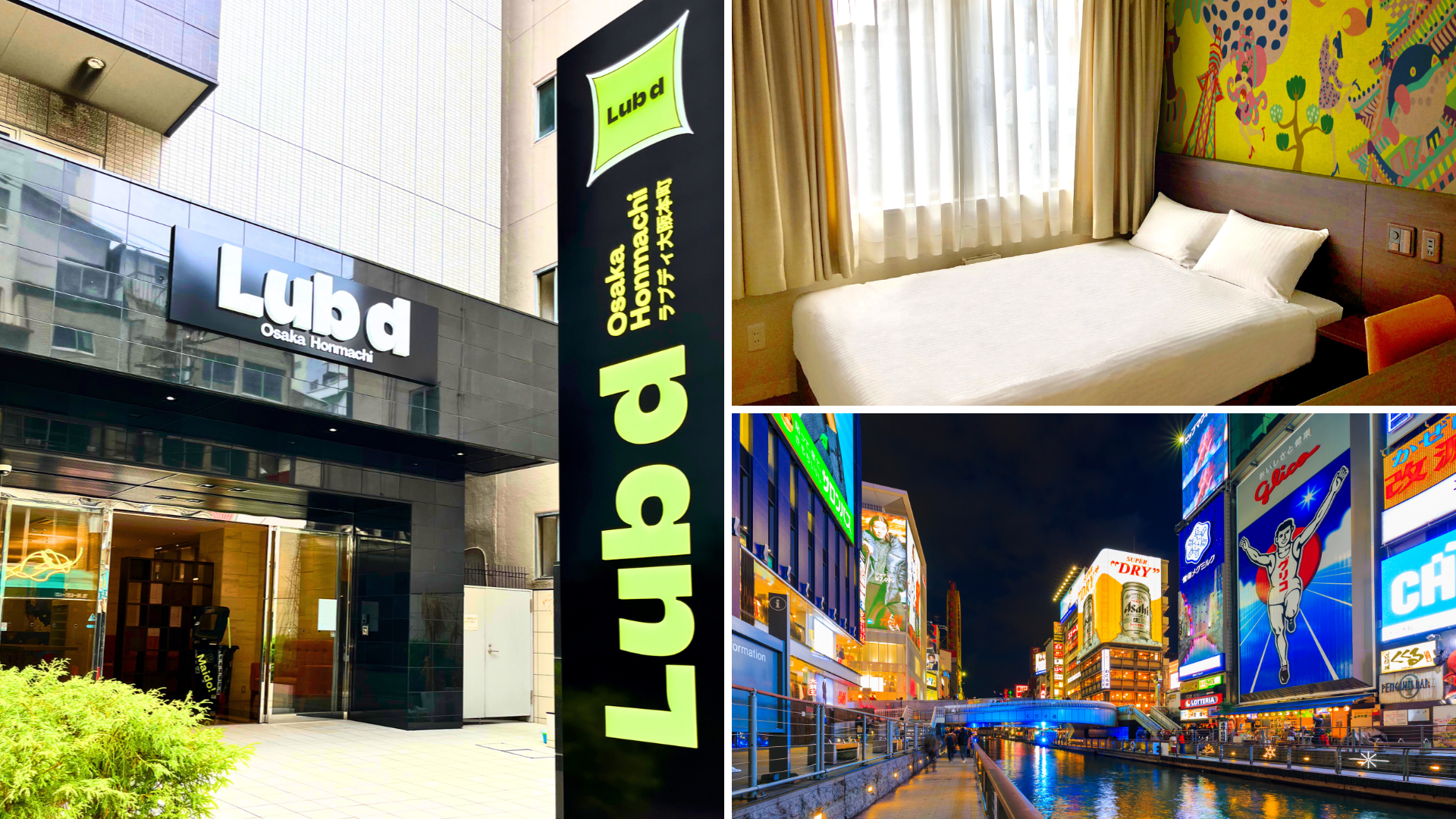
If affordable accommodation where you can base yourself to explore all the must-see locations in Osaka is your cup of tea, then Lub d Osaka Honmachi is what you need.
Our modern and new facilities offer a range of amenities, such as free Wi-Fi access, a common lounge, and a laundry room. We also provide LUUP e-scooters and e-bikes — ideal for exploring the city at your own pace. Additionally, the friendly staff can help you with your itinerary and provide useful tips and advice.
We are also a few steps from the popular shopping areas of Shinsaibashi, Amerika-mura as well as the famous Dotonbori district. With its central location, Lub d Osaka Honmachi is the perfect base for a wonderful stay in Osaka!


